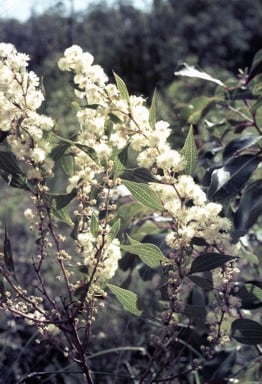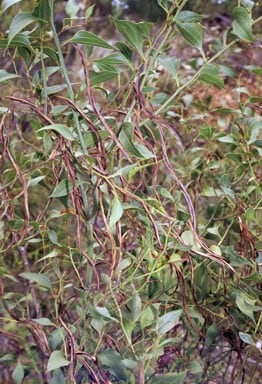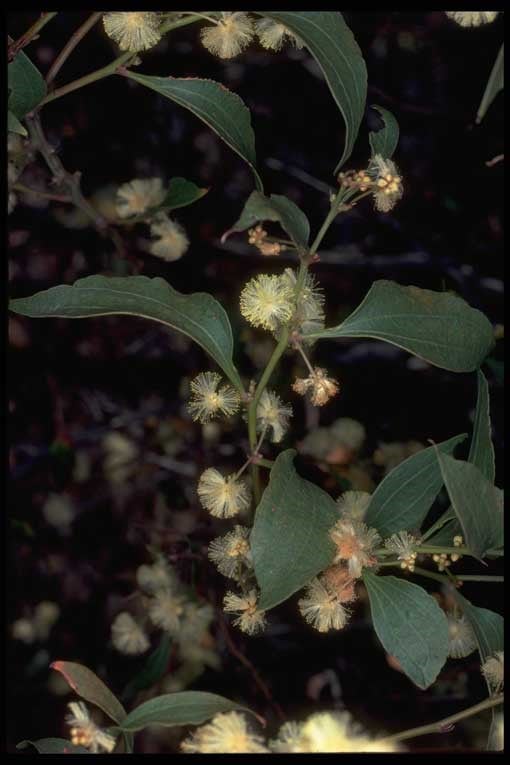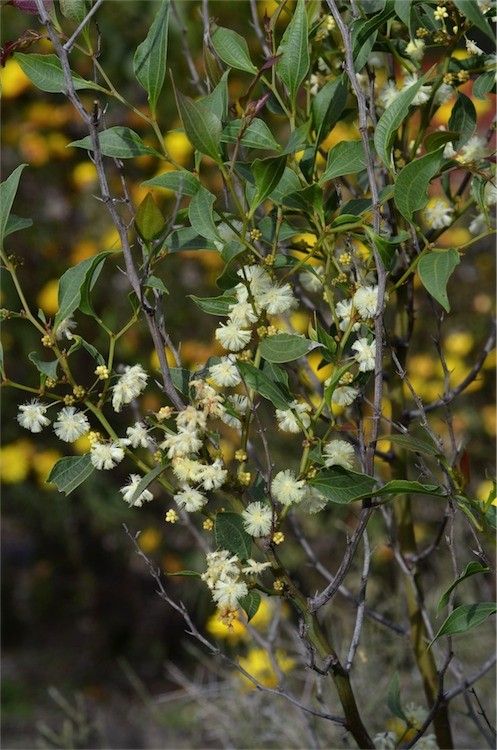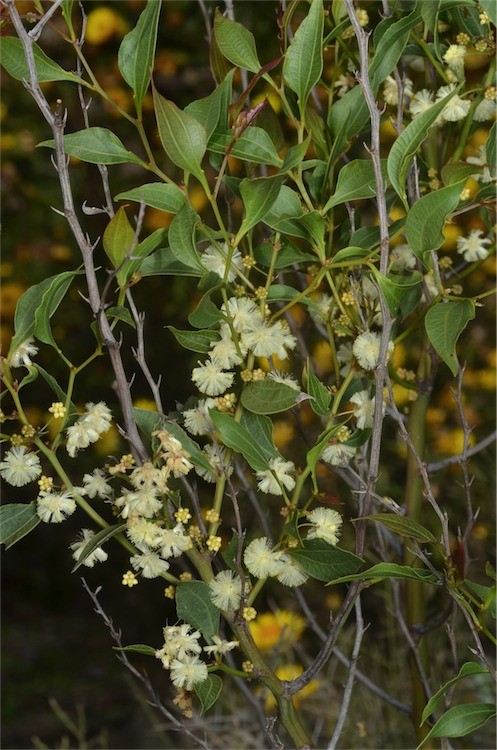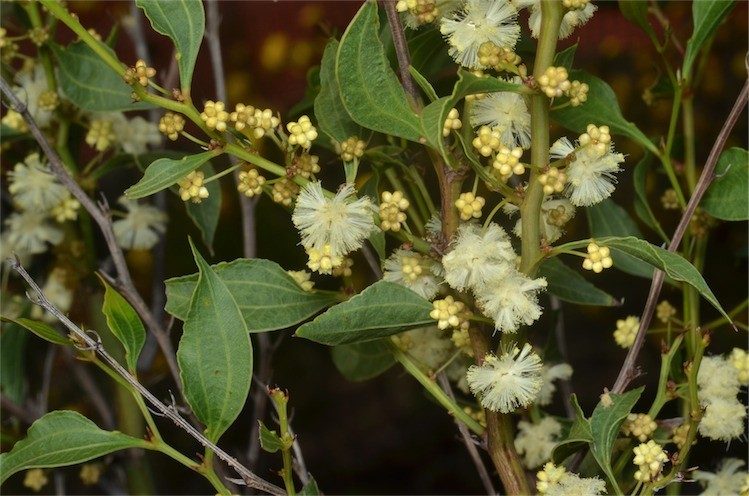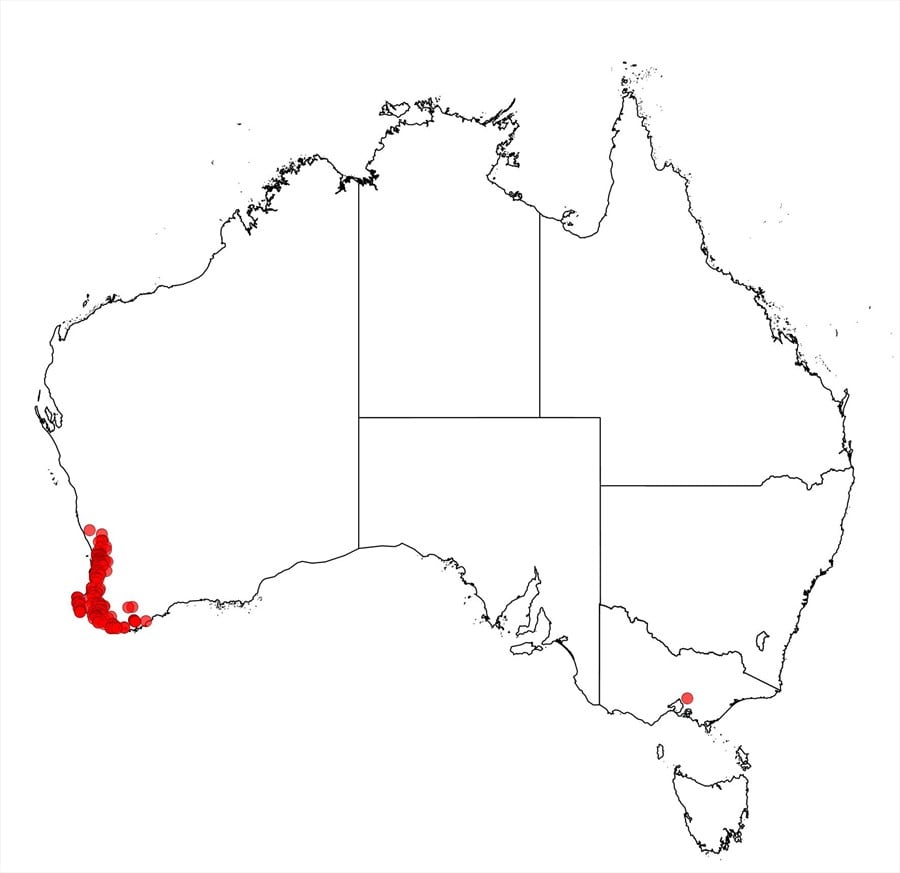Acacia urophylla Benth.
WATTLE
Acacias of Australia
Common Name
Pointed leaved Acacia, Tail-leaved Acacia
Family
Fabaceae
Distribution
Occurs from S of New Norcia S to Augusta and E to near Walpole, and in the Porongurup Ra., south-western W.A.
Description
Shrub to 3 m high, normally glabrous. Branchlets prominently yellow-ribbed. Stipules 2–8 mm long, indurate, ±pungent. Phyllodes obliquely lanceolate to ovate, with adaxial margin crenulate and normally more convex than abaxial margin, 5–11 (–16) cm long, 1–4 (–5) cm wide, narrowed at base, slightly undulate, acuminate, thin, prominently reticulate between the 2–4 prominent longitudinal nerves per face; gland 5–10 (–15) mm above pulvinus. Inflorescences normally 2–5-headed racemes, normally 2 per node; raceme axes normally < 1–2 mm long; peduncles often appearing fasciculate, 5–14 mm long, slender; heads globular, subloosely 8–12-flowered, pale yellow or white. Flowers 4-merous; sepals c. 2/3-united. Pods narrowly linear, twisted, to c. 14 cm long, 2–4 mm wide, coriaceous to crustaceous or subwoody, black; margins thick and pale coloured. Seeds longitudinal, 3–4 mm long, oblong-elliptic, glossy, dark brown; aril terminal.
Habitat
It is especially common in the Karri (Eucalyptus diversicolor) forest from near Walpole to Pemberton where it commonly forms dense regrowth populations following fire. Further N it is less common and occurs as disjunct populations along creeks in Jarrah (E. marginata) woodland or forest.
Specimens
W.A.: 7.9 km from Northcliffe towards Pemberton, E.M.Canning WA/68 6480 (PERTH); western end of the Porongurup Ra., R.H.Kuchel 1990 (PERTH); 1.6 km S of Augusta township, B.R.Maslin 1689 (K, MEL, NSW, PERTH); 116 km N of Perth on Geraldton Hwy, R.Melville 4090 (P); Darling Ra., E. Pritzel 323 (B, M, MO, NSW, P, W, Z).
Notes
Some field workers have suggested that A. scalpelliformis might be a hybrid between A. urophylla and A. divergens.
Most closely related to A. scalpelliformis with which it is sometimes sympatric. Despite its unusual phyllode nervation, A. urophylla is related to the ‘A. myrtifolia group’ as shown especially by its 4-merous flowers and by carpological features. Seedling studies by J.Vassal, Bull. Soc. Hist. Nat. Toulouse 108: 125–247 (1972), showed that these two species, plus other phyllodinous and bipinnate taxa, were related, and consequently were accommodated in sect. Pulchelloidea.
FOA Reference
Data derived from Flora of Australia Volumes 11A (2001), 11B (2001) and 12 (1998), products of ABRS, ©Commonwealth of Australia
Author
B.R.Maslin
Minor edits by J.Rogers
This identification key and fact sheets are available as a mobile application:
URL: https://apps.lucidcentral.org/wattle/
© Copyright 2018. All rights reserved.
